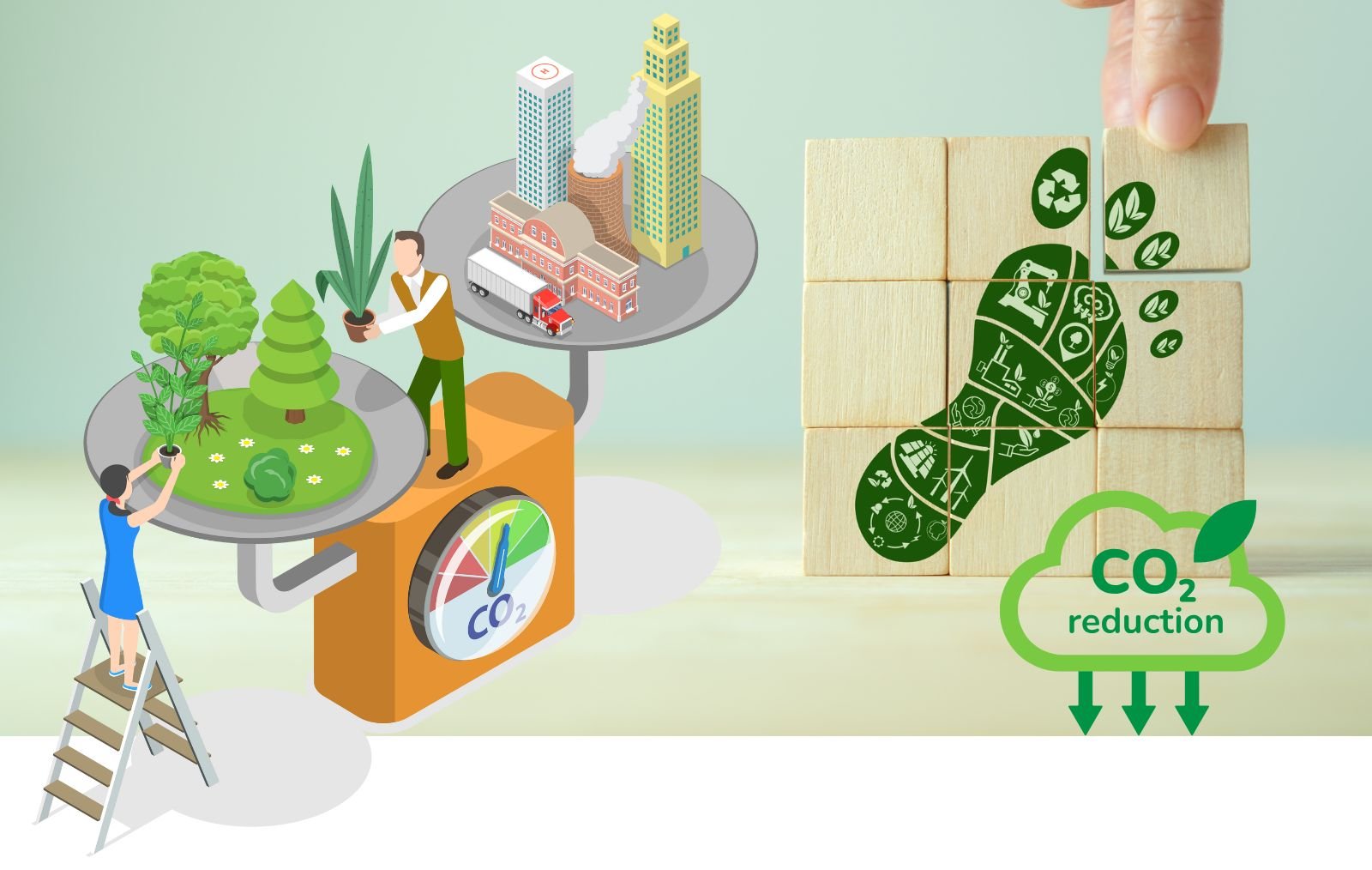
How to Cut Your Carbon Footprint: A Guide to Sustainable Living
Reduction of carbon footprint is a huge step towards the saving of the environment and combating climate change. Every one of us can contribute to this issue by bringing sustainability to the forefront of daily life. The infographic here profiles a few simple yet highly impactful actions in reducing the carbon footprint. Let's take each of them up and understand how it impacts the planet.
Causes Carbon Footprint and How to Reduce
1. Drive Less
Why: Transportation is one of the larger generators of carbon emissions. Cars, and certainly those on gasoline and diesel, consume a great deal of CO₂.
How to Put it into Practice: Try walking, biking, carpooling, or taking public transport instead of driving. For those who can, try buying an electric vehicle or working from home to reduce daily travel.
2. Go Local
Why: The transportation of commodities over long distances incurs fuel and emissions. When you choose products manufactured locally, you are reducing the carbon footprint emanating from it.
How to Do It: Encourage local farmers and artists. Buy fresh fruits and vegetables, and any other produce available in the local market, so that your purchases do not have to bear this environmental cost.
3. Cold-Water Washing
Why: Heating water for laundry consumes a lot of energy, which contributes to the emission of excess carbon. Doing a laundry in cold water saves a lot of energy.
How to Practice: Change the machine to cold water setting. Cold is usually as good for washing clothes as hot, especially with the new detergents that are designed for cold washing.
4. Limit Bath Time
Why:Taking shorter showers reduces the amount of heated water, in turn lowering energy consumption and water utilization. It also saves resources and minimizes the energy needed by water heaters.
How to Do It: Limit showers to five minutes or less. Install a low-flow showerhead. While shampooing or soaping up, turn off the water.
5. Plant Trees
Why:Trees absorb carbon dioxide that makes them natural carbon sinks. In return, planting trees can offset the emissions made by storing carbon and releasing oxygen.
How to Implement: Join local tree planting events or support reforestation efforts or plant a tree or two in your backyard, space permitting .
6. Adjust Thermostat
Why: Heating and cooling consumption is often high. Even slight changes to their thermostat will save a lot of energy and greenhouse gas emissions.
How to Implement: In winter, lower your thermostat a few degrees and wear warmer clothing. In summer, crank up fans to stay cool and set your thermostat just a degree or two higher.
7. Fly Less
Why:Flying is probably one of the most carbon-intensive things you can do. Each flight, especially long-haul, generates a lot of CO₂ per passenger.
How to Use: Other modes of transport like trains or buses can be utilized on shorter routes. In case air travel is inevitable, flights should be preferably direct in order to avoid emission due to takeoffs and landings or carbon offset your flight with environmental initiatives.
8. Reusability of Bags
Why:Plastic bags are a leading contributor to pollution as well as made from fossil resources. The production of single use plastics as well as the fossil-based resources used in such manufacturing reduces if bags are re-used.
How to Do It: Carry reusable bags with you when you go shopping. Keep a few extra in your car or next to your front door so they won't slip your mind when you need to leave.
9. Unplug Appliances
Why:Most appliances continue to use power even after being turned off. It's called "phantom energy." Unplugging these devices saves energy on devices you don't really need to be using.
How to Do: Unplug chargers, microwaves, and similar small appliances when not in use. Otherwise, plug into a power strip and turn off several devices with one switch.
10. Replace Your Light Bulbs
Why:LED light bulbs consume an incredibly low amount of power compared to traditional incandescent or CFL bulbs and last much, much longer, generating waste instead of causing waste.
To implement this, is to replace all the old bulbs with LED, which consumes less energy and works longer than the traditional bulbs. It may be minute, but it can help save more from your energy bill and ultimately reduce the carbon footprint around you.
Conclusion
Such practices toward a less harmful environment can really make all the difference in the reduction of carbon emission. While each act may be small on its own, it multiplies into grand change in the environment as a whole. The conscious act of adopting measures to reduce your carbon footprint not only combats climate change but also gives the next generation a healthier world. Sustainability is a journey, and every step counts!
People Are asking Like This
Q- Is carbon footprint harmful?
Ans- As carbon dioxide continues rising to fuel further increase in temperature, multiplier effects will be experienced globally-increased ocean acidification, rising sea levels, more frequent and intense storms, mass species extinctions, food scarcity, and greater economic inequality.
Q- What is the main cause of carbon footprint?
Ans- Fossil fuels-in the form of coal, oil and gas--are the single largest source of global Warming climate change, accounting for more than 75 percent of global greenhouse gas emissions and nearly 90 percent of all carbon dioxide emissions.
Q -Is carbon harmful to Earth?
Ans- Yes, Carbon dioxide in the atmosphere is what warms the planet. It follows from carbon dioxide in the atmosphere to bring about climate change. In less than 200 years of human activities, its amount in the atmosphere has been raised by 50%.










